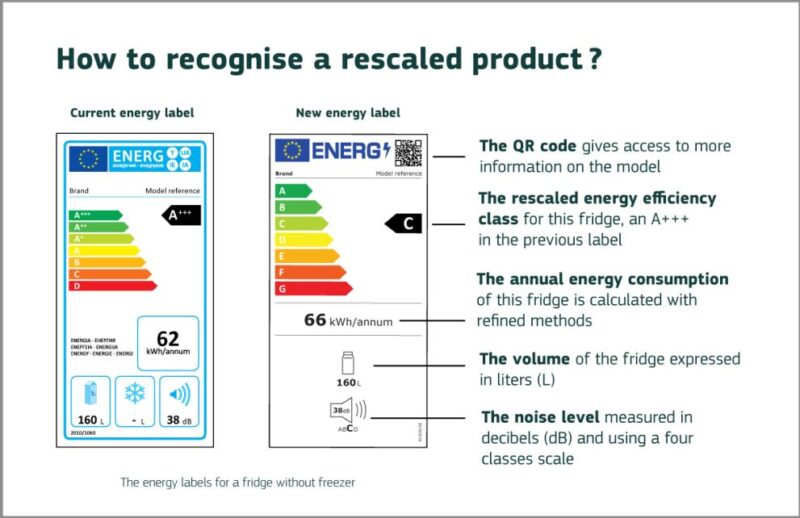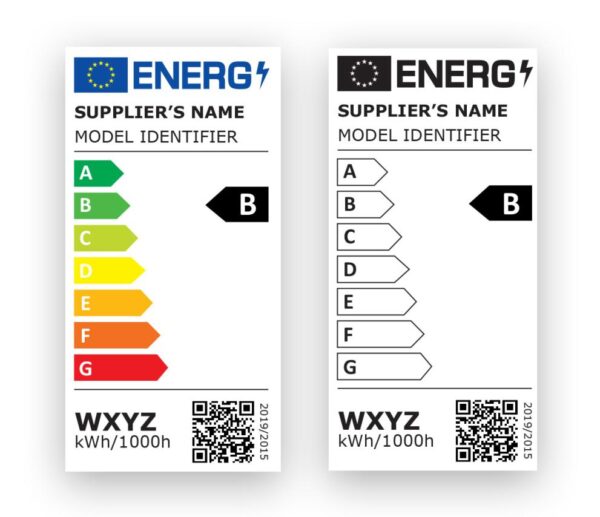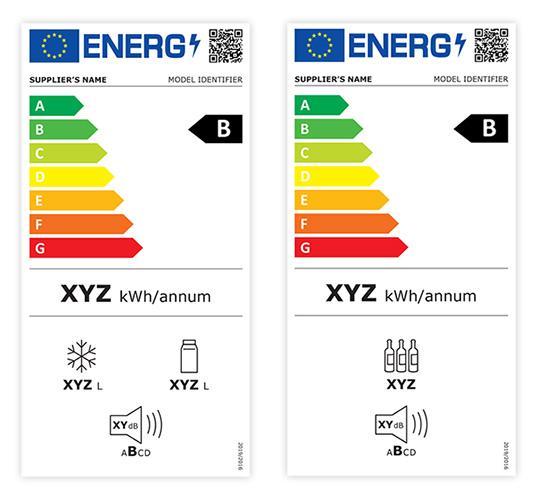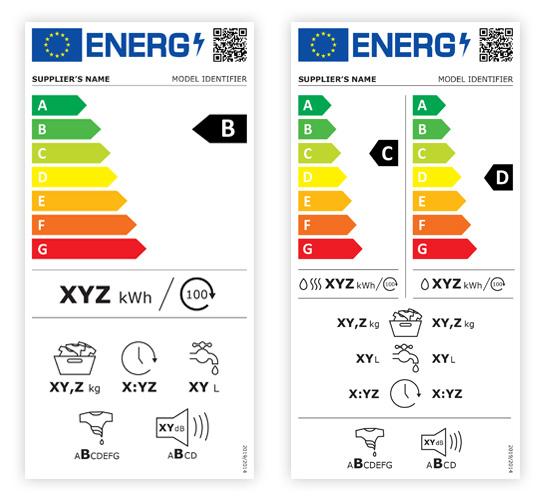Introduction
The energy labelling system is a simple, yet efficient way of illustrating the energy efficiency of a product. It was firstly introduced in 1994 with the goal of reducing energy consumption among consumers. Since then, it has been redesigned to accommodate a simpler grading system, namely from A to G. Products that belong in A-class achieve the best energy efficiency, while products that fall into the G-class achieve the worst. In the figure below, you can see an example of the new energy label and some tips on how to read it. The figure is taken from EU commission’s website.

The EU legislation for energy labels has been estimated to bring energy savings of up to €285 per year on each household’s energy bills. In terms of recognition, the energy label was recognised by 93% of consumers in 2019, while 79% considered it when buying energy efficient products, according to the Special Eurobarometer 492.
In EVIDENT we fully support the energy label system and the energy efficiency it promotes. In this blog article we will have a look on the energy labels for some widely-used household appliances and we will provide you with some energy tips to further increase the energy efficiency.
Lighting energy labels

Lighting energy label
Energy label information:
Lighting labels provide information on the product’s energy efficiency class and energy consumption (kWh). Image is taken by EU Commission’s website.
Lighting energy efficiency tips:
-
Replacing 5 of your home’s most frequently used lights with energy-efficient bulbs could save you €75 a year in energy costs.
-
Turn off the lights when they’re not in use. Lighting accounts for about 12% of a typical residential utility bill.
Fridge and freezer energy labels
Energy label information:
Fridge and freezer labels provide information on the product’s energy efficiency class, energy consumption, storage volume, whether or not it has a freezer compartment, and noise emissions. Image is taken by EU Commission’s website.
Fridge energy efficiency tips:
-
Check the temperature of your refrigerator and freezer with a thermometer.The optimum temperature for refrigerator is 5°C, and -18 °C for freezer.
-
Clean the condenser coils at least once a year. This could improve your refrigerator’s efficiency by 30%.
-
Place your refrigerator it at least 10 cm away from the wall so as not to overwork the motor. This way you can reduce energy usage by up to 40%.

Fridge and freezer energy label
Washing machine energy labels

Washing machine energy label
Energy label information:
Washing machine energy labels provide information on the energy efficiency class, energy consumption for 100 cycles, water consumption for 1 cycle, duration for 1 cycle and noise emissions. The image is taken from the EU Commission’s website.
Washing machine energy efficiency tips:
-
Reducing the temperature of your washing water by 15 degrees can save you more than €110 a year.
-
Eco programmes enable you to reduce consumption by 30% – 45%.
- Wait until your machine is full before starting a washing cycle. Two half-loads will use up to 70% more energy than a single full load.
Dishwasher energy labels
Energy label information:
Dishwasher labels provide information on the product’s energy efficiency class, energy consumption for 100 cycles, eco-programme duration, water consumption for 1 cycle, capacity of the dishwasher and noise emissions. Image is taken by EU Commission’s website.
Dishwasher energy efficiency tips:
-
Using dishwashers at night will reduce strain on the power grid during the peak usage hours of 4 PM and 6 PM. You can use the delay or timing feature on your dishwasher to start a full load of dishes late at night.
-
Use the “eco-mode” setting that automatically programs optimum settings for reducing water and energy use.
-
Remember to only run your dishwasher when it is full. Waiting for a full load gets you the most cleaning power for every euro you spend on water and energy.

Dishwasher energy label
If you want to know more about how to increase your everyday energy efficiency, you can follow the EVIDENT project’s social media accounts where we post energy tips on a by-weekly basis.
 This project has received funding from the European Union’s Horizon 2020 research and innovation programme under grant agreement No
This project has received funding from the European Union’s Horizon 2020 research and innovation programme under grant agreement No